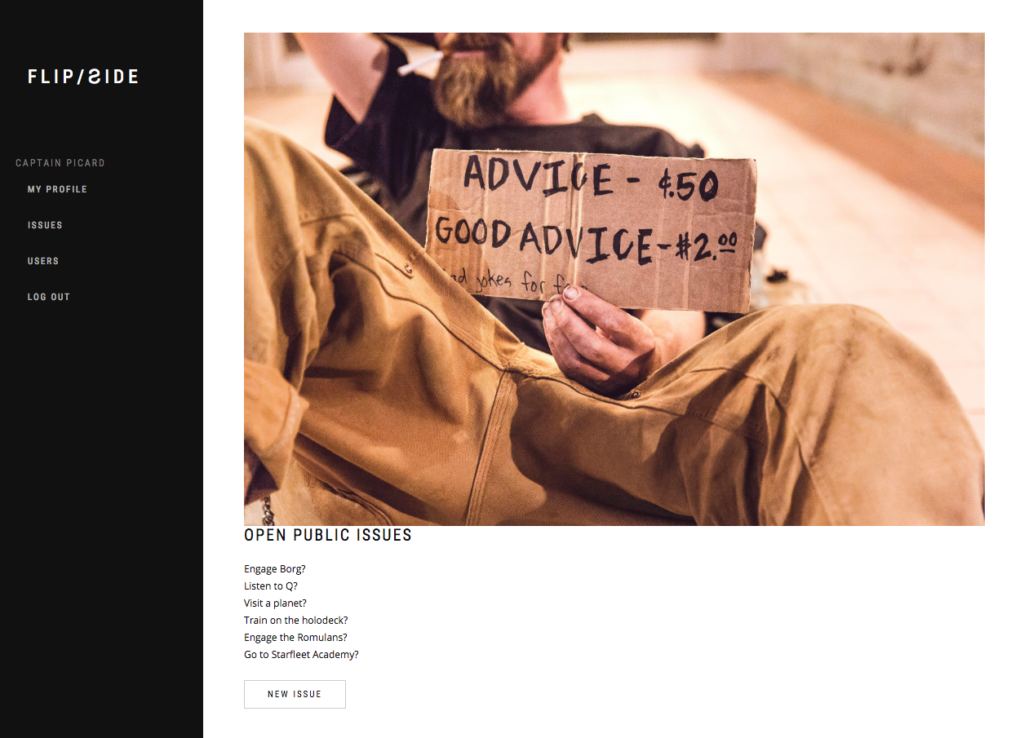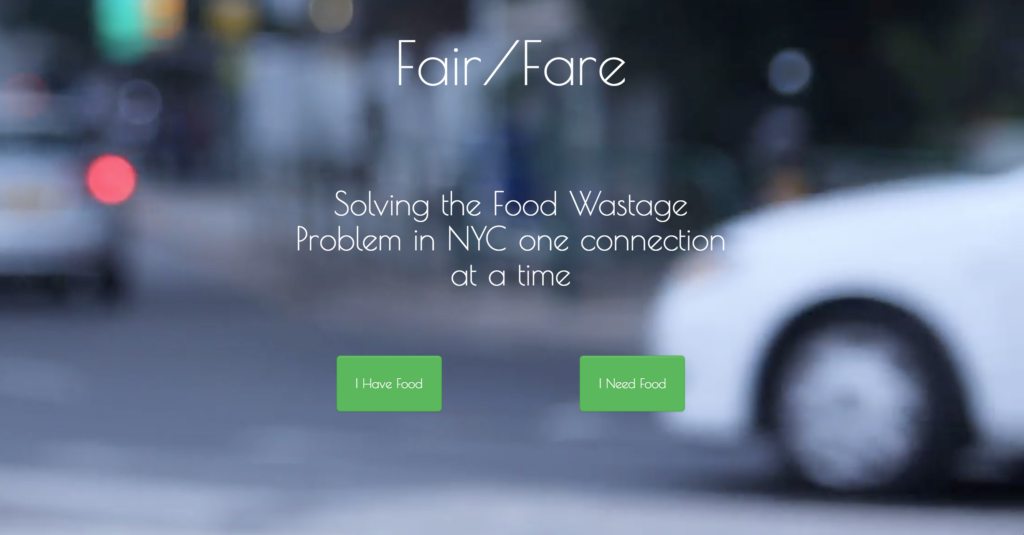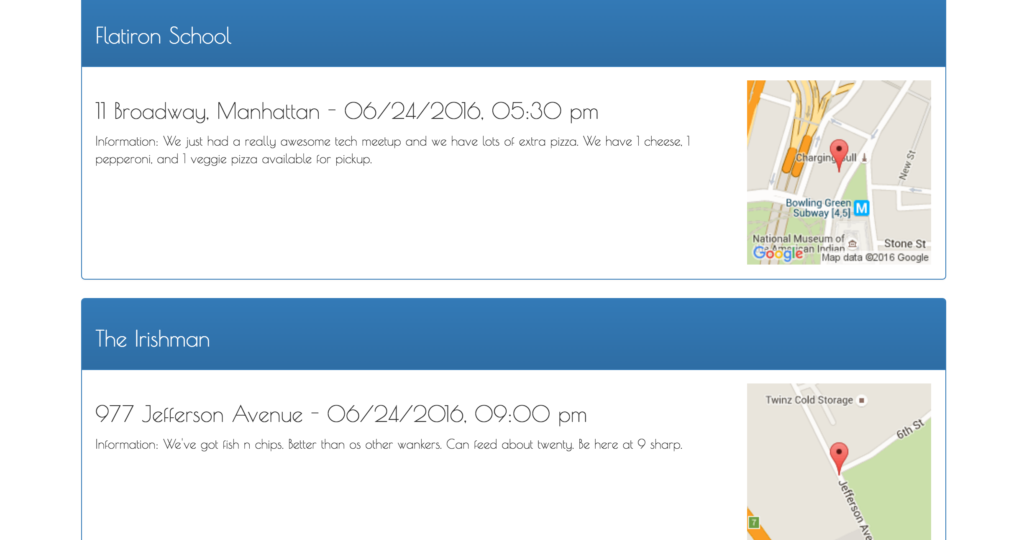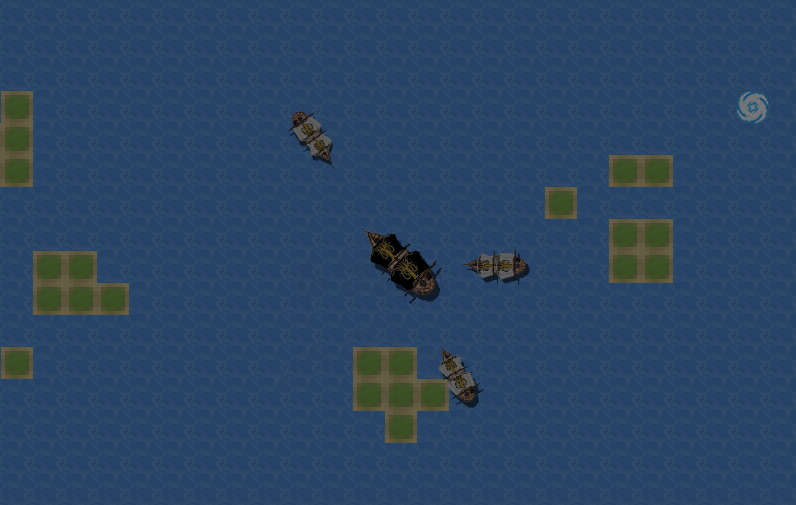This past week, students from Flatiron School’s Full-Stack Web Development immersive presented their final projects at our Science Fair, revealing exactly how far one can come as a developer in three months of intensive study and practice. The projects—built in the final three days of the three-month course—ranged from apps aimed at solving community problems, platforms to facilitate better communication within and between organizations, educational tools, as well as a few surprisingly addictive games. While the projects each tackled very different objectives, all displayed a tremendous amount of both creativity and technical skill.
Below, we feature four highlights—check back next week for more!
Flipside

Have you ever had trouble making a decision? Flatiron students Kristin Donovan and Chris Morrison want to help you. Together, they created Flipside, an online reimagining of the classic pros and cons list. Donovan, who spent eight years in the fashion industry before attending Flatiron School to learn how to code, was inspired to create the app by her own decision-making processes: “I love making lists—especially pros and cons lists. I wanted to create an app that would keep track of all of the issues I’m weighing and the pros and cons of each issue in order to track my thought processes.” With enough issues resolved through the app, their hope is for users to have a better sense of how they approach decisions—”a mind map for decision making,” as Donovan calls it.
Flipside users create issues on the platform and add pros and cons for each. (In the cheeky examples Donovan and Morrison created for the Science Fair demonstration, they took the perspectives of Star Trek characters. Captain Picard asks himself, “Should we engage the Borg?” Worf wonders if he should train in the holodeck.) But here’s where the app goes well beyond your average paper pros and cons list. Users must assign different weights to each pro and con, forcing users to really think about how important each aspect of an issue is. The app will guide you by recommending a positive (“Looks positive! You should do this.”) or negative decision based on these weights, not just the sheer number of pros or cons—so if you find yourself with lot of weak reasons to do something and one strong reason not to, the app can recognize that and advise you accordingly.
Flipside also makes decisions social. Donovan explains, “I wanted an app that would bring other people into the decision-making process to gain multiple points of view.” Right now, users can set their issues to private or public for other users to see. Eventually, Donovan and Morrison plan to utilize WebSockets to allow users to comment on their friends’ open issues and offer their advice.
Trying the app out for yourself shouldn’t be a hard decision.
GroupSlam
As Jacob Schiff explains, “everyone loves gifs and memes, but we noticed that there wasn’t an easy way to create and share team-specific memes with just the people in your team.” Enter Groupslam, which Schiff created alongside Rachel Bronstein, Kevin Webster, and Chris Morrison as a tool for creating and sharing gifs and memes… that might not make sense outside an organization.
Consider a meme about studying on Flatiron’s online campus, Learn.co:

It might be is hilarious to Flatiron students and staff, but confusing to people outside of Flatiron School. Schiff says, ”GroupSlam was intended to be the destination for easily capturing and sharing these team-specific experiences through memes/gifs.”
GroupSlam features an intuitive meme creator: users can easily pull in images or gifs to “meme-ify” with their own text; then through the app, the resulting memes can be sent around to different groups within an organization—so the people who get the jokes will be the ones who see the jokes.
The GroupSlam team has plans to continue improving the app after leaving Flatiron School. Schiff says, “We learned a lot from this project, and I think we all have ideas for things to add. I personally would like to incorporate Giphy’s API for even easier gif creation, add the ability to gif-ify a video recorded on your phone, and further optimize the app for speed and security.”
Get started making memes for your team right here.
Art Space

As Robin Tully explains it, he and project partner Alana Simoncelli made Art Space to “create a single location that could foster the connection between artists and potential display venues.” As lifelong art lovers, frequent art gallery visitors, and, in Simoncelli’s case, a visual artist herself, the two Flatiron students had a clear view of the limiting nature of gallery representation in the art world: for untraditional or unrepresented artists, it’s extremely difficult to get their work into the traditional gallery system; and yet, there’s no systemized way for these artists to reach the organizers of untraditional spaces or pop-up galleries. With Art Space—a platform for both artists to list their work and venues to list their spaces—they hope to change that.
To improve the connection potential between artists and venues, the pair intend to continue improving Art Space’s search functionality: “Ideally, you could upload art or a venue and give them tags that allow you to search by specific interests or styles, such as ‘post-modern’ or ‘coffee shop.’”
Fair/Fare

Mayank Mishra and Kevin Webster wanted to use their final project here at Flatiron School to build something that serves the community. Both had experience trying to reduce food waste, so they had the idea to create Fair/Fare, a platform that can link together organizations with excess food and local food rescue nonprofits, such as City Harvest. These relationships between restaurants and nonprofits do exist, but Mishra and Webster knew that most of the communication happens in-person or over the phone—there was an opportunity to bring it online to facilitate more connections.
Before attending Flatiron School, Mishra worked as a lawyer in India, and then as a technical marketer in Phoenix, AZ; Webster had been an analyst at JP Morgan. Both had only minimal programming experience. Their future plans include expanding Fair/Fare. Webster explains, “We would like to integrate the Uber Rush API with our app. It fits perfectly into the mission of our app as it would allows Fair/Fare users to use Uber to have their excess food delivered to food banks. Apart from the Uber API, our future plans for the app include setting up the Twillio API, and getting it production ready so that a local nonprofit could benefit by actually using it.”

Stay tuned for next week when we’ll be sharing more of these great projects right here.
Do you want to be able to build apps like these? A great way to get started is to try our free Intro to Programming track on Learn.co.
Written byJOSH HIRSHFELD
Content Marketing Manager, Flatiron School

